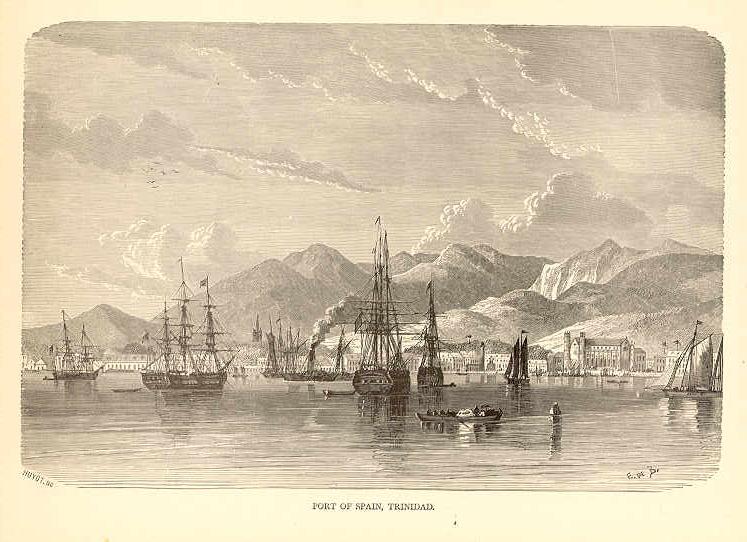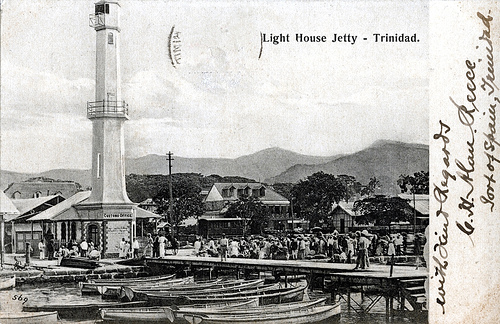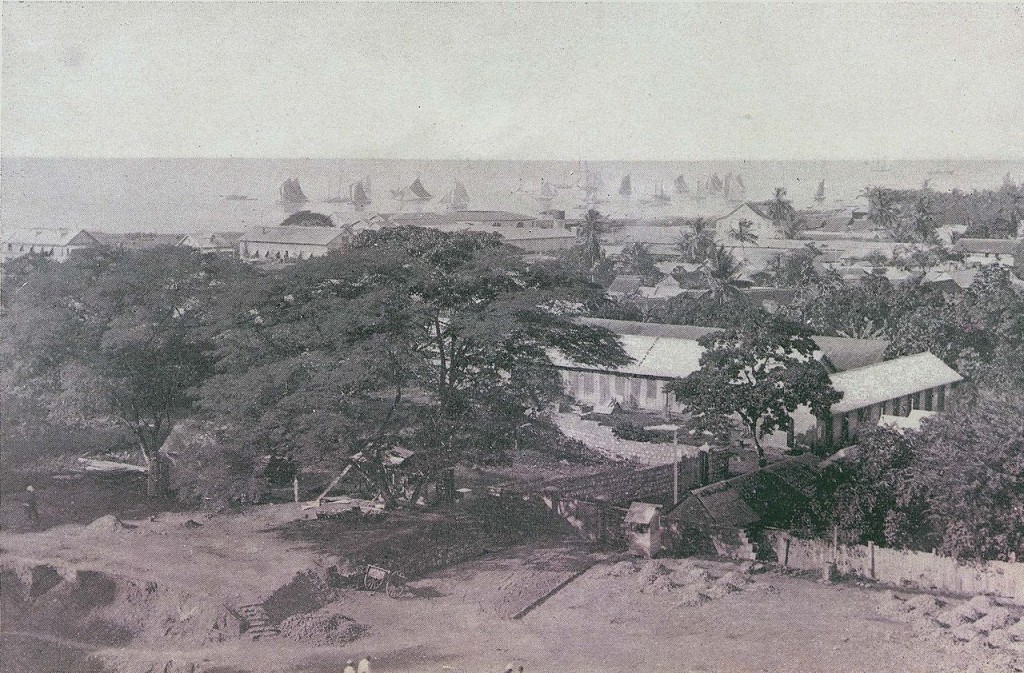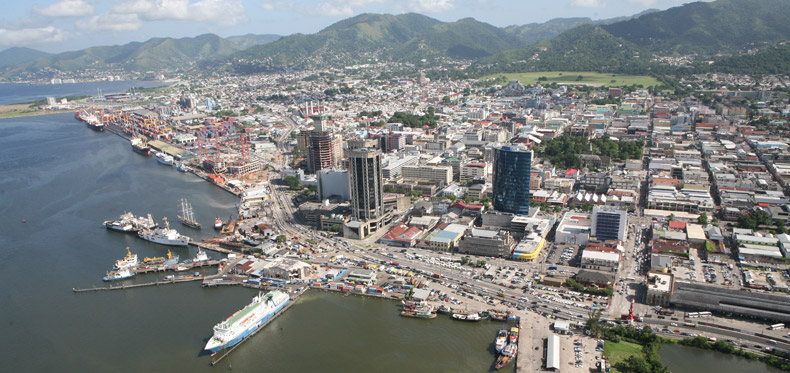The History of the Port of Port of Spain
By Hillis Byer
Sitting in a taxi on my way to Curepe junction, the taxi driver looks up at the lowering sky and remarks “That rain going an’ come down heavy and town going an’ flood out for sure.” “Hmmm,” was all I could reply as I silently thanked all my stars [both lucky and unlucky] that I wouldn’t be one of the commuters making my way through City Gate when that portentous event took place as ‘prophesied’ by the driver. He then went on to give me a brief history of the port area beyond City Gate – this “history” in its brevity was confined to the few facts that he knew, namely that the area was “reclaimed land” and the impending flooding of City Gate on that particular day [and on all other days] would be caused by the water in the area having nowhere else to go as the tide would be high, and as he put it, “the Sea will always try to take back its original territory.” This wasn’t the first time that I had heard that tale of reclaimed land and the impending vengeance of the sea, and not being a native of “town” myself, I tried to form a mental picture of what the Port and surrounding areas would have looked like back in the day, with water coming all the way up to Independence Square, then called Marine Square.
 Source: http://www.rootsweb.ancestry.
Source: http://www.rootsweb.ancestry.
Anyone who has ever visited the port area can understand the importance of its location as a gateway in welcoming throngs of international tourists through the Cruise Ship Complex; as a point of entry and exit for inter-island travel between the two island of Trinidad and Tobago; as a critical point of trade and commerce for cargo to the Americas and other CARICOM nations, and with the latest addition of the International Waterfront Centre to the area, now the seat of the Government’s present headquarters and the largest conference center in the English-speaking Caribbean
The area now known as the Port of Port of Spain was originally an area of coastal wetlands and mangrove forest where the original Amerindian inhabitants would have anchored their canoes after their journeys into the island from other neighboring Caribbean islands.
Because of its natural harbor, and relatively neutral weather conditions, the natives would settle in the area, which they dubbed “Cumucurapo” or place of the Silk Cotton Trees, until the advent of the Spanish to the island, which was “stumbled-upon” by Columbus in the late 1490’s.
 Source: https://www.flickr.com/
Source: https://www.flickr.com/
The make-shift port and its surrounding town would only rise to prominence in 1757, under the Spanish Governor of the island Don Pedro de la Moneda, whose original seat of power, and the island’s first capital San Jose de Oruna [now St. Joseph], had fallen into a state of dilapidation and needed to be relocated. The area chosen for relocation would now be known as Puerto de los Hispanioles, or Port of the Spaniards and the Port which was now a vital point of egress and safe harbor for the Spanish ships in the Gulf of Paria began to take shape with the installation of a landing and the erection of a Fort called Fort St. Andres.
When the island changed hands after conquest by the British in 1797, the population of the island’s capital had boomed significantly, leading its now British Governor Sir Thomas Piton to implement the first major land reclamation scheme in 1803 after the diversion of the St. Ann’s river. The tidal mudflats would give way to inhabitable lots crated by using land fill from the Laventille Hills, borne on the backs of Mules over a period of two decades to fill the area south of Marine Square, now known as Sea Lots.
 Port of Spain Harbour – 1890’s
Port of Spain Harbour – 1890’s
Source: http://en.wikipedia.org/
A second significant land reclamation would begin in the 1840’s which would lead to the development of the areas and early buildings along South Quay. The Lighthouse, which was then Kerosene-powered, was erected around 1842 to be a guide for incoming vessels in the Port of Spain harbor from the Gulf of Paria. The areas surrounding City Gate, Broadway and the St Vincent Wharf would be created in the 1850’s reclamation.
The most significant reclamation scheme would be undertaken in the latter half of the 1930’s with the Deep Water Harbor Scheme which would see dredge materials from the project being used to fill the areas along what is now Wrightson Road. The new lands formed in those areas were used as a base for US forces during World War II and was then known as Docksite.
In the latter part of the 19th century and earlier twentieth century, the area would undergo further significant development with the development of the areas along Wrightson Road, the major buildings in the financial district along Independence Square and hubs of local transportation along South Quay and the latest addition of the International Waterfront Centre.
 Photographed by: Stephen Broadbridge
Photographed by: Stephen Broadbridge
Source: http://www.
The modern port now stands as a booming center of trade and industry, doing extreme credit to Trinidad and Tobago in making it one on the most developed and stable islands in the Caribbean. It’s hard to imagine whether the island’s early inhabitants – a handful of hunters, farmers and fishermen, dwelling in roughly thatched mud huts – and settlers – in search of new lands to conquer and a fabled city laden with Gold – would be able to recognize this area, once a swampy low-lying beach, in its modern incarnation of glitzy high-rise towers and international hotels
Comments are closed.

